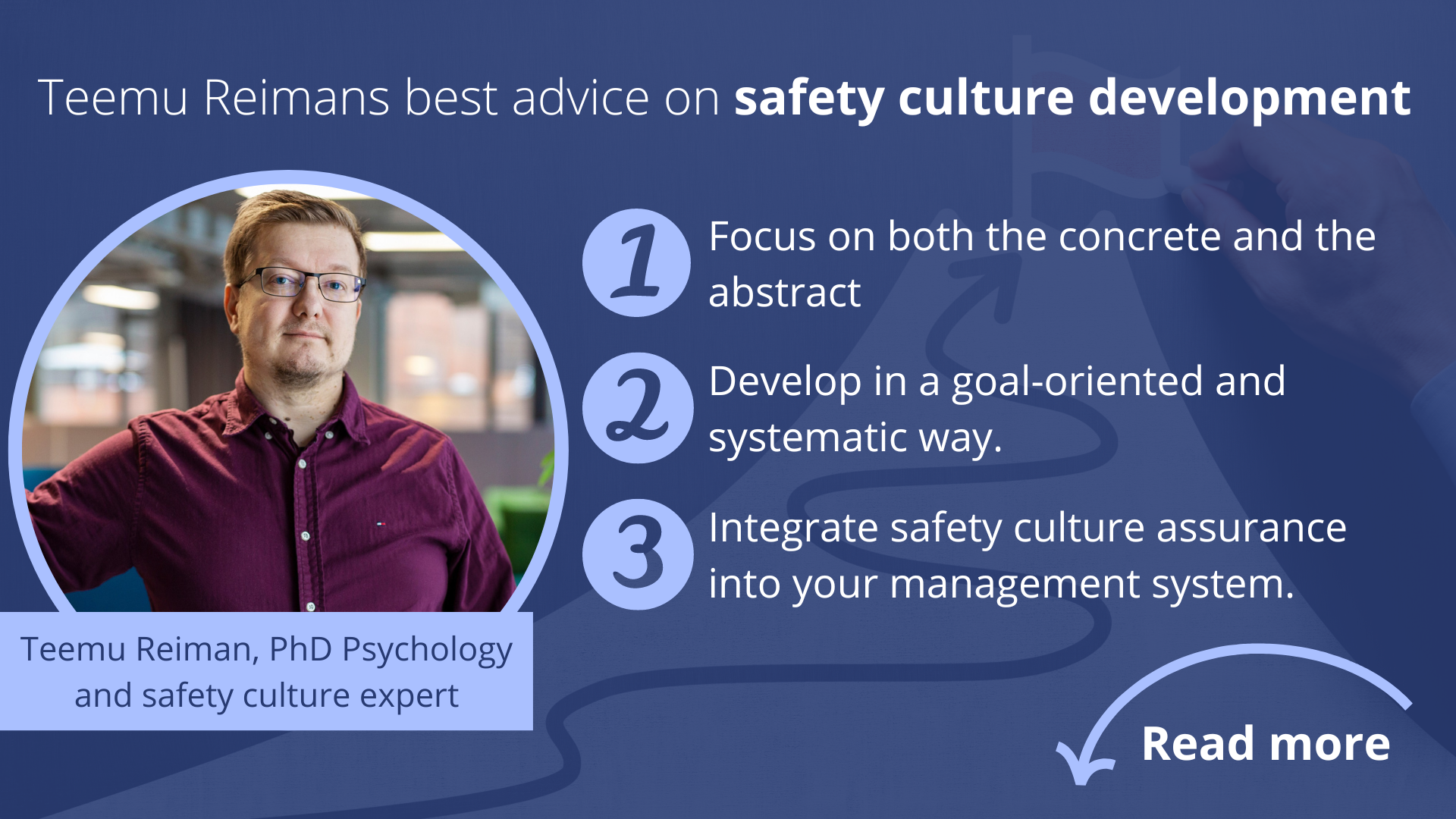Teemu Reimans best advice
2023-02-08
Teemu Reiman has been working with the research and development of safety-critical organizations for nearly twenty-five years. He is currently working in his own company, Lilikoi. Previously Reiman worked as a Safety Culture Manager at a nuclear new build project at Fennovoima, and as a senior scientist at VTT a research institution owned by the Finnish state. Reiman has a doctoral degree in psychology from the University of Helsinki, and a title of Docent (Adjunct Professor) from the Aalto University. He made his dissertation in 2007 on safety culture evaluations of nuclear power plant maintenance organizations. Reiman has conducted safety culture research, assessments and development projects in various safety critical organizations including nuclear, healthcare, railways, mining, military, petrochemical, and aviation domains. Reiman has published more than 20 scientific articles, as well as several dozen book articles and scientific reports. MTO Safety is collaborating with Reiman on a safety culture assessment project for an international client with operations in both Sweden and Finland.
The safety culture journey never ends as safety is never ready. However, remember to celebrate small successes along the way to keep the momentum.
These are Teemu Reimans three best tips for developing a successful safety culture.
Focus on both the concrete and the abstract - Develop the company's ways of working and working conditions as part of the overall development of the company. Culture is influenced through its concrete manifestations. In addition to the concrete, clarify the values that guide activities and make sure they are reflected in practice. A good understanding of both culture and safety is needed to develop them.
Develop in a goal-oriented and systematic way - Maintain and strengthen the strengths, correct weaknesses, monitor effectiveness and regularly assess the current state. Involve staff in the development process. The development of a safety culture must serve the objectives of the organization, it is not an end in itself. The development must be in line with the organization's strategic guidelines, and not, for example, a "counter-campaign" by the safety department or another program separate from the general development of operations. The organization needs to have a vision of what good safety culture looks like. They also need an awareness of the current state of safety culture, its strengths, and weaknesses.
Integrate safety culture assurance into your management system - Safety culture assurance is not a one-off project, but rather a continuous process with several different activities occurring regularly. Also, the existing safety management activities should be aligned with safety culture development, and activities aimed at monitoring the implementation and effectiveness of the safety management system should include safety culture as one of the inspected elements.



